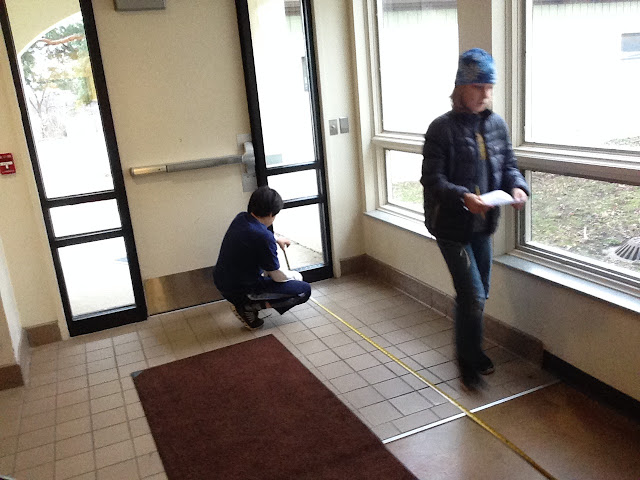With the rest of our class time, we do a variety of activities that benefit the entire group, regardless of where they happen to be in their particular math books. In this post, I wanted to share a few of the things we've done in recent weeks apart from Singapore work.
We regularly work on problem solving as a class. First we'll go through a problem together, and then we'll break off to solve similar problems in small groups or individually. The problems themselves are sometimes slightly ridiculous ones pulled from various places (you may recall this blog post from October), including some of my own design. For example:
For this one, kids worked in groups of two to three, picked a spot and attempted to calculate the volume of the space. After some measurements and calculations, the kids had an approximate volume of the space. They then turned to the internet to try and find inexpensive sources of plastic balls. It turns out there are a lot of options:
 |
| You can get anything on the internet. |
One enterprising young student even found an online ball pit calculator, complete with tips on how to construct your pit.
 |
| Taking measurements to convert the middle school airlock into a ball pit (which is almost certainly a fire code violation). |
Now I just need to organize a fundraiser to raise capital for the venture...
Sometimes, someone will ask a question that lends itself to an impromptu mini-lesson.
For example, someone had a question about how to break down a problem from their Singapore book. As a class, we spent a period really breaking down a word problem.
First, I wrote it up on the board as written in the book.
Then, we talked through it. Determining what the question is asking can sometimes be deceptively complicated, so parsing out what is being asked is crucial. Also, there are some vocabulary words that are used infrequently in everyday life, but are important to basic math. Here's what the board looked like after we finished:
It looks particularly complicated because we explored a few of different ways to approach the problem.
We often devote a day to playing math-related games. Sometimes they're classic games like Uno, Blokus, or Othello, and other times, they're Summers-Knoll classics, such as Factor Tag.
A new favorite that we've played is "The Card-Forehead Game." We obviously need to work on a flashier title, but the game itself is really fun.
You play in groups of three. Two players face each other, then each take a playing card and hold it up to their own forehead (so they can't see it, but their opponent can). The third person then generates a simple math problem on the spot based on the cards that each player holds up.
For example, if Nick holds up a 10, and Ella holds up a 7, the third person could say, "Nick minus Ella equals 3."
Both players have to quickly think about what their card must be if that is true. The third player also gets practice by generating the problem in the first place, and making sure they know the correct answer.
Here's a quick video of the game in action:
It's a fun, easy way to get practice in the four operations, firming up math facts along the way.
This post has grown beyond my expectations, so I'll cap this entry here. Look for a follow-up installment in upcoming weeks!








No comments:
Post a Comment